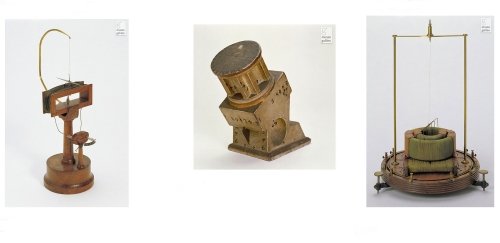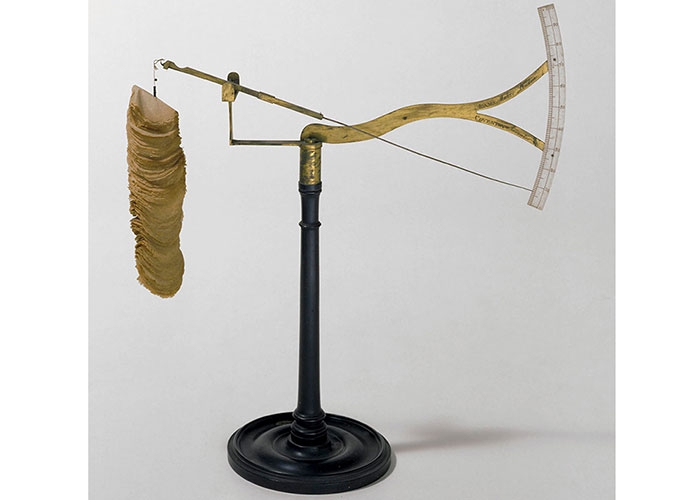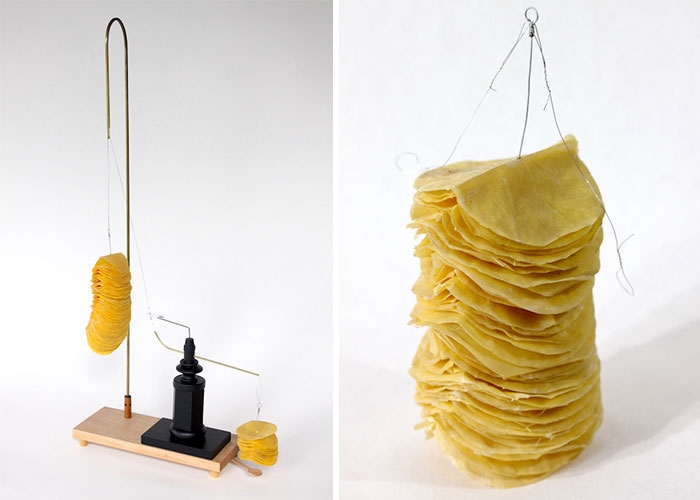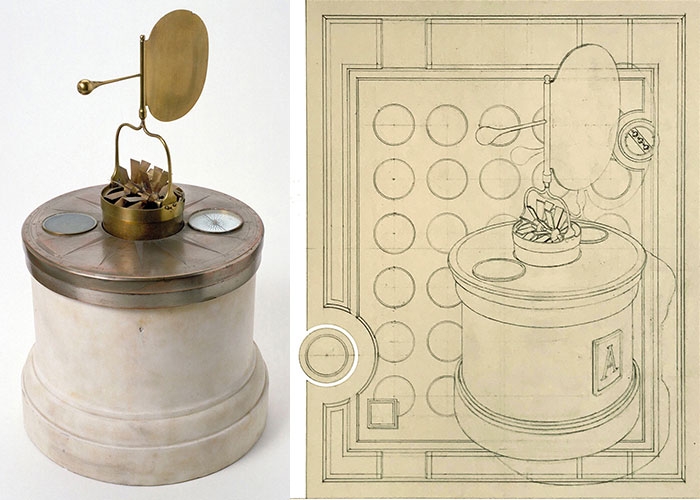Art Meets Science: Profs. Whitten & Bosch Collaborate on the Galileo Project
- News & Events
- News
- Art Meets Science: Profs. Whitten & Bosch Collaborate on the Galileo Project

Pictured are three objects. Are they scientific instruments or are they art objects?
They’re actually scientific instruments, albeit antiquated ones. The middle photo is of a 17th-century sundial. The two objects on either side are 19th-century galvanometers that measure electrical currents. All three are part of Richard Whitten’s and Doug Bosch’s latest brainchild – the Galileo Project.
RIC Professor of Art Richard Whitten was awarded a Make Art Grant by the Rhode Island State Council on the Arts to complete this project in collaboration with RIC Professor of Art Doug Bosch.
Named after Galileo, father of modern science, the Galileo Project is an exploration of that nebulous region where, “historical, scientific instruments lose their meaning over time and become art objects, while artists make objects that appear to have a scientific basis,” says Whitten. (See a catalog of amazing mechanical devices Whitten has created over the years that appear to have a scientific basis: “Wunderkabinett: A Cabinet of Curiousities.”)
In this project, Bosch and Whitten select six scientific instruments from a collection of antiquities at the Museo Galileo in Italy. Whitten will create paintings of the six instruments (sometimes with modifications) and then six instruments of his own invention. Likewise, Bosch will create sculptures of the six instruments and then invent six more of his own. In all, they will generate a total of 24 finished pieces (12 sculptures and 12 paintings).


“I’m inventing small sculptures that directly borrow from the six objects in the museum’s archive,” Bosch says. “Visually speaking, my sculptures could live alongside the original artifact as a cousin or hybrid, while simultaneously being viewed as an art object.”
Both artists enjoy using science to inform the aesthetics and underpinnings of their work. Their joint project will reflect how a painter and sculptor interpret the same data differently.
Whitten places particular emphasis on China’s influence on European scientific instruments.
“I’m convinced that ideas were transmitted through trade routes between China, Italy and the Netherlands,” he says. “The objects I create will be a statement on how much European scientific history depends on objects and ideas obtained from China.”

The first exhibition of the Galileo Project is scheduled for October 2025. A catalog of the objects will be written by RIC Professor of Art Natasha Seaman, with graphic design by RIC Professor of Art Nancy Bockbrader. The project will be co-curated by Victoria Gao, director of Bannister Gallery.
See the Department of Art for information about our program.
